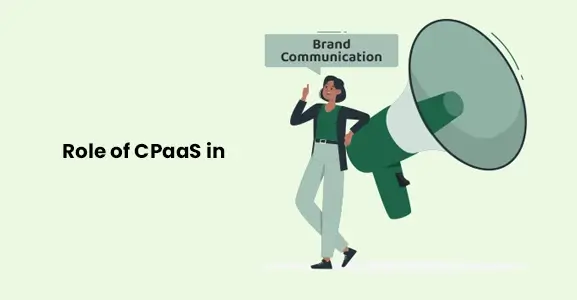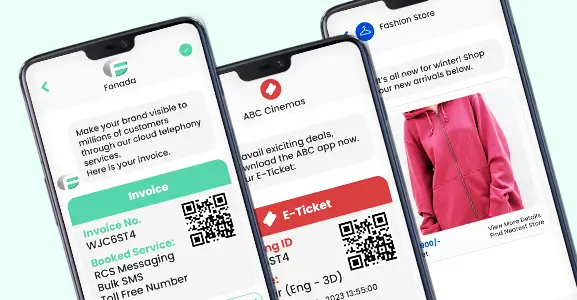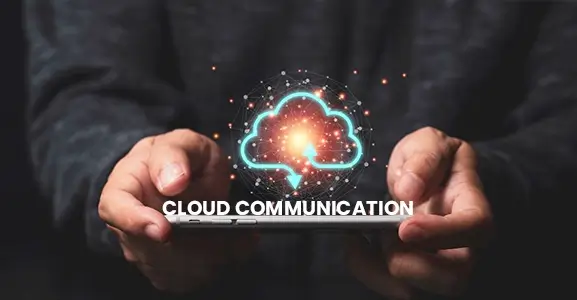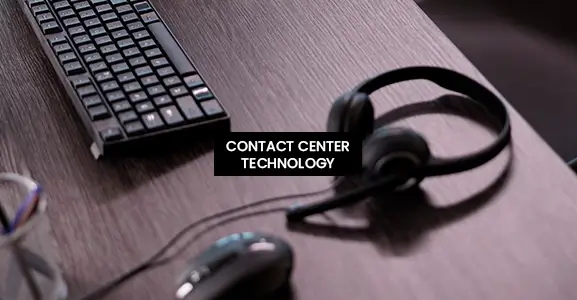Introduction – How To Talk To Customers
The way you communicate with clients continues to have a significant impact on your business. Mastering these regular interactions can assure the overall success of your organisation. 45 percent of customers state they would pay more for exceptional customer service.
Avoid that error and find a way to delight customers with continuous communication. The best method is always to allow customer conversations to revolve around communicating information to clients and enhancing engagement.
Read More: Why Is Customer Relationship Key To Grow Business And Build Trust ?
Need To Communicate Effectively With Clients
Customer service relies on communication. Customer service professionals must use their proper skills to calm, satisfy, and convince customers, whether they need help buying a product or are so frustrated they want to leave the business.
Building rapport with customers through effective communication facilitates customer retention and results in the sale of products or services.
This content communicates to all customers using the same language and style, which can reduce customized service:
- Known individual information
- Purchase and non-purchase activity
- Duration of a relationship
- Location
- Engagement level across various touch points
- Preferences
Using this information about your customer will let you have a real customer conversation with them that is suited to them and not just a mass broadcast to all of your customers.
How To Talk To Clients On The Phone?
Calls are an integral part of client support for all businesses. They enable businesses to interact with clients in real-time and assist them in resolving any inquiries customers may have about business products and services.
- Style guidelines detail all the distinctive features of your brand, allowing your team to create a consistent service across the board. It should guide without stifling creativity. Pay attention to the appropriate tone and phrasing, and describe the types of service you enjoy experiencing.
- A specific vocabulary or phrase reminds team members of the company’s values and standards.
- A dynamic database of recorded responses that your organization can actively add to saves time by optimizing how you respond to frequent questions.
- If you can assist a customer in any manner, do so without hesitation. The fewer efforts people perceive, the higher they value your customer service.
- Mirroring builds trust with your customer and puts them at ease, making it easier for them to understand what you’re trying to convey.
- If you don’t use the customer’s name when you greet them, you’re missing a chance to use consumer psychology to your advantage.
Read More: Top 10 Customer Experience (CX) Trends And Statistics For 2023
How To Talk To Customers Effectively?
Always effective communication is an art. And if you want to excel at it, you’ll brush up on customer preferences. You need to prepare and have a workforce trained to ensure that the flow of contacts with customers is always going in the right direction.
Your business can benefit greatly from knowing how to start a conversation with a client on chat and how to talk to clients on the phone in different ways.
Here Are The Ten Most Common Methods Of Communicating With Clients:
1. Always Be Friendly And Polite
When speaking with customers, it is essential to be polite. This will make customers feel appreciated and significant, increasing their chances of purchasing from you. Make consumers feel welcome and appreciated—they’re your business’s lifeblood.
2. Employ Positive Language
Use positive language when you talk with customers. This will make them happy and more likely to buy. Avoiding negative words entirely is preferable because they can frequently have the opposite impact. Each support team member must speak in a unique, non-robotic voice to retain positivity.
3. Pay Close Attention And Listen Very Carefully
Listening attentively to your consumers is a crucial part of every customer conversation. This demonstrates that you care about what they say and increases their trust and likelihood to buy from you. By speaking less, you put your customers on a higher level and give them time to discuss their problems.
4. Provide Assistance
While communicating with customers, it is vital to demonstrate intent. With it, all communication would feel more varied and soulless. If a client has an issue, you must provide a solution. This will demonstrate your concern and willingness to assist. This type of service is sure to earn their loyalty.
5. Establish Rapport And Build Trust
When a customer speaks, make an effort to establish rapport and trust. One way to do this is to be open and friendly with them, even outside your professional relationship’s framework. Understanding why a customer chose your business or contacting your customer support department can make or break a sale and build customer loyalty.
6. Avoid Pushing
Customers dislike feeling pressured into making a purchase, so it is preferable to avoid forceful marketing techniques. Focus instead on providing excellent customer service and allowing the product to sell itself.
If you want to delight your clients continually, focus on how to start a conversation with a client on chat with them and not on yourself.
7. Acquire Knowledge
When interacting with customers, it is critical to understand the products and services you offer sincerely. This will demonstrate your expertise, increasing the likelihood that they will purchase from you. You must ensure the context of the communication with your client is suitable. To provide outstanding customer experiences, invest in your employees and teach them how to talk to clients on the phone.
8. Be Kind And Understandable
68% of customers prefer that a friendly customer service agent remains the key to providing excellent service. When speaking with customers, you should demonstrate empathy and understanding. This will show that you are sensitive to their needs and eager to give support.
9. Look And Smile
Occasionally, we forget that each of our clients is an actual person. It becomes an even more significant problem. Direct eye contact with consumers while smiling is easy to show them you care about them. This will put them at ease and increase their likelihood of purchasing from you.
10. Express Gratitude For Their Time
When it comes to how to speak with customers, timing is everything. After the chat, express gratitude for the customer’s time. This will demonstrate your gratitude for their business and your eagerness for them to return in the future.
How To Talk With Customers In English?
Communicating clearly and directly is the key to a successful customer conversation. Most sales conversations involve being courteous, direct, and using plain language. Use “welcome,” “thank you,” and “have a great day” regularly.
The more you practice speaking with the customer in English, the more significant is your improvement. You can improve your business English by watching and imitating YouTube videos of customer conversations between people using business English. Pay close attention to how you pronounce words and watch your body language.
Here are a few essential points that you need to keep in mind while talking to a customer in English.
1. Greet Your Customers In An Appropriate Manner
Greeting someone is relatively simple if you understand the appropriate procedure. The objective is to be professional and polite but not overly friendly. Keep your distance. The customer might be turned off if you look too eager or excited.
Necessary vocabulary:
- Hi
- Hello
- Welcome to
- Good morning/evening
- How may I assist you?
- Can I assist you in your search?
Example sentences:
Hello, how can I help you?
Hello, sir or madam. Can I find something for you today?
2. Handle Rude Customers Without Being Hostile
Sometimes, a customer might be rude and start shouting at you. Maybe he or she is having a bad day and is taking it out with you. Getting insight from these experiences is crucial rather than taking them personally.
Your task is to apologize as politely as possible to the customer to appease him or her. Use the following expressions.
Necessary vocabulary:
- We regret that our product did not meet your expectations.
- I sincerely apologize.
- I understand your distress.
- We sincerely apologize for any inconvenience.
- I can fix the problem by.
- I do not doubt that we can resolve this.
Example sentences:
We deeply regret that our product did not meet your expectations. But I can offer you a free product replacement.
I understand you are unhappy and I sincerely apologize for any inconvenience caused. We can resolve this issue if you kindly answer a few queries.
3. Open-Ended Questions And Active Listening
Consider listening to an active rather than passive procedure. This means taking part in the conversation instead of just listening to it. Active listeners show that they are paying attention, encourage others to communicate, and try to understand what the speaker is saying.
Frequently, “yes or no” inquiries result in dead-end answers. This is not helpful for active listening because it disrupts the flow of the conversation. It also makes it more difficult to genuinely listen to some other person, as you cannot learn much from a brief, non-descriptive response.
Instead, ask open-ended inquiries to show that you’re engaged in the conversation with the other person.
When you are actively listening, you can ask open-ended questions like:
- Tell me more about that, please.
- What were your thoughts about that?
- What do you believe is the greatest way forward?
- How do you believe you could have altered your response?
Therapists often use open-ended questions because they get people to think deeply and give detailed responses.
Active listening has several benefits. It can impact your relationships, work, and social interactions.
4. Use Empathy To Win Over Your Customers.
Cognitive empathy plays a significant role in sales and customer service. Empathetic expressions, patience, and consideration can help resolve client issues faster and easier.
It can be difficult to assist customers who appear emotionally stressed and unresponsive. What do you suggest to customers who are unhappy or even angry? Even though this can be scary sometimes, there are many ways to respond to your customer’s questions and concerns.
You can significantly enhance the customer experience if you take a few seconds to establish rapport with the consumer by expressing genuine empathy.
Here are some phrases that will help your customers know that you’re paying attention to their problem:
- “I understand how frustrating…”
- “I understand how difficult it is to…”
- “I can imagine how sad it is to…”
- “I understand how hard it must be when…”
- “It makes me so sad to hear that…”
5. Focus On The Customer Preferences
Most customers have certain needs, and some of those needs are even very specific.
Observing your customer and paying close attention to his requirements will simplify communication. This will make it easy to talk to customers and respond to their needs.
When a customer enters a store, greet them and then watch them for a while as they look around. You’ll notice that they might keep talking about the same product or compare it to another. Then you know they’re pretty sure of their preferences, and all you have to do is convince the others that they need it.
For example, a woman might go to a cell phone store and only look at Samsung phones. You know she favors Androids to Apple items and her budget from observing her. You can now inquire about the specific features she is looking for in her new phone. You can also ask specific questions if you want to.
Some vocabulary is extremely useful in these circumstances.
- Take a look at this offer (product or service).
- This item would be an excellent suit…
- Innovative features, / brand-new features, and /exciting features.
- Have you tried this?
- What is your opinion?
Example:
You may have an interest in Android smartphones. It suits you. We have great pricing and a discount, so this is great for you.
6. Sealing The Deal Is A Means Of Concluding A Conversation.
Once the customer has decided, you can discuss payment and close a deal on a good note.
Leave a little space for the future!
Essential vocabulary:
- We appreciate you shopping with us.
- We trust you enjoyed your shopping experience with us.
- We hope you’ll visit us again.
- We hope to meet you again soon.
- Feel free to contact us if you have queries.
- We would be delighted to assist if a friend or family member has a similar need.
Example sentences:
We appreciate you shopping with us. We hope to see you again soon!
We trust you enjoyed your shopping experience with us. Please call us with any questions concerning your new [product].
How To Communicate With Customers?
1. Be Polite And Respectful
It may seem simple, but it’s noteworthy. Being polite allows you to establish a rapport with your customers and encourages them to return to your business.
2. Be Polite
Customers will remember you for a long time if you are open, friendly, and warm. Communicate with them as honestly as possible to make an impact. People appreciate it when they feel like they’re communicating with an individual concerned about their issues.
3. Keep Your Tone Natural.
Company jargon sounds awesome, but it can seem stilted. Instead of “I apologize for the inconvenience,” say “I’m sorry.” “Thanks for waiting” instead of “Thanks for your patience”? Speaking naturally can help individuals feel more at ease, understanding that a real person is on the other side of the line.
4. Be Positive
“It’s not what you express, it’s how you say it” is always remembered. So, when you talk to customers, be careful about your words. Strive to maintain a positive attitude and avoid words such as “but” and “actually,” which can be interpreted as arrogant. Turn negative statements into positive ones to improve customer service!
5. Do Research
You probably research the person you’re going out on a date with beforehand by looking them up online to learn more about them.
If you take the time to learn more about them and their business, you’ll better understand their needs and why they want you to help them. If you can assist them in finding better alternatives, they will be much more satisfied with your service.
6. Never Be Scared To Apologize
No one enjoys admitting a mistake, but there are situations when it is unavoidable. In customer service, admitting mistakes and apologizing is half the battle won.
Nothing is more frustrating than a company making a mistake but failing to admit it. Therefore, if that’s the case, accept the mistake and apologize. Instead of covering up a mistake, your customer would appreciate this.
Read More: The Ultimate Guide for Improving Your Business Communication
How To Start A Conversation With A Client On Chat?
Every day, more and more individuals default to using chat; its popularity will continue to rise. Make sure your customer support team is successful by using these scripts.
- Greetings – How your team initially talks with customers significantly impacts the track of that relationship. You can also customize messages for returning customers. Customers will appreciate feeling valued and appreciated, especially when combined with the interactive nature of live chat.
- Co Browsing And Video Chats – Through “co-browsing,” agents can see the customer’s screen in real-time. Customers and agents can see and hear each other’s faces and voices via video conferencing, which can lead to a more engaging discussion. Your staff may reduce consumer effort by getting directly to the point with co-browsing and video conferencing.
- Apologies – Apologies are worth more than discounts or credits. They are an indispensable part of your team’s toolkits. Using customer service scripts, you can regain some of your customers’ trust and inspire humility among your customer service team members.
- Requesting for More Clarification – Customers may view requests for further information from your customer support team as an unwanted obstacle. To swiftly resolve the issue, use the customer care scripts to elicit additional information from the customer.
Conclusion:
To have effective customer experiences, it is necessary to comprehend what satisfies consumers and how to talk with the customer in English to handle their issues. You can make customer conversations positive and helpful. If you want repeat business and references from satisfied clients, it pays to make the extra effort to connect with them.
FAQs
When you initially meet the client, give them a friendly expression on your face to communicate that you are pleased to see them and enthusiastic about the potential for working together. Maintaining eye contact, providing a firm handshake, and paying close attention when speaking with a client. You should also show a fantastic and focused attitude.
Each of your clients has a small piece of the secret to your company’s success. This will impact your marketing strategy and product development.
The term “customer service” refers to the assistance given to clients when they contact a company. It is a method via which a brand or business and a customer can share information.
The key to becoming a great small-talk is learning to draw on the same warm conversational abilities when conversing with somebody you don’t know well, in a different setting, or under tremendous social or professional pressure.
Each of the customers has a small piece of the secret to your company’s success. How you engage with people, whether in person or over the internet, can affect your business and show what works well and what could use improvement.

Dec 11, 2024
Top Contact Center Optimization Tools For 2024
“A thriving business knows how to fetch maximum output from limited resources by optimizing ca... Read More
Nov 13, 2024
What Is Brand Communication? CPaaS Role Explained
Did you ever wonder why some advertisements grab your attention instantly, while others do not? The... Read More
Nov 01, 2024
What Is Automated Messaging And How Does It Work?
Automated messaging or text automation empowers businesses and marketing professionals to connect wi... Read MoreLatest Updates
From Fonada
Industry Insights, Trends, Innovations, Updates, and Case Studies from Industry Experts
View
Customer
Reviews
Discover why our customers love us - read their authentic and heartfelt reviews!
View
Case
Studies
Explore real-life scenarios, offering analysis, and solutions to practical challenges
View
Convert Leads Into Sales With Fonada
Trusted CPaaS Solution Provider








